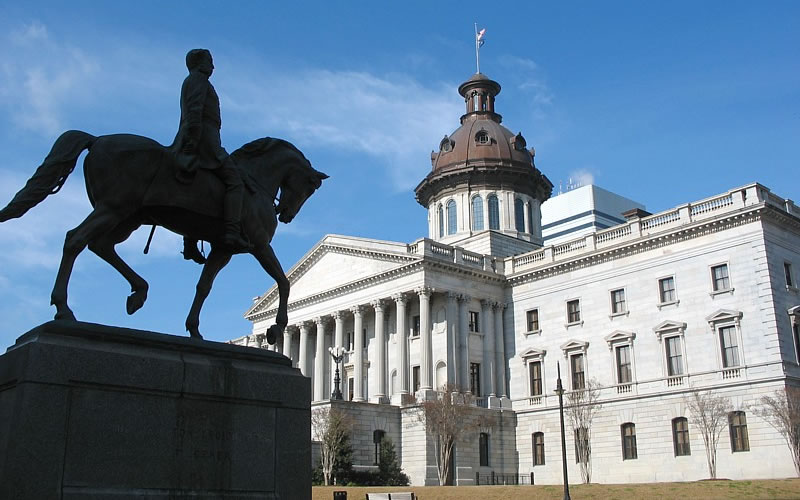
By Andy Brack, editor and publisher | Mention the word “Confederate” these days and you sound like you’re itching for an argument. It shouldn’t be that way.
For months across the South, there have been calls to remove Confederate monuments or to rename buildings or streets honoring long dead Confederate soldiers. At the same time, others have said to leave the statues and names alone.
But last month in Charlottesville, Va., everything changed. During a white nationalist rally over the removal of a statue of Confederate Gen. Robert E. Lee, a car plowed through a crowd, killing a 32-year woman. Violence ensued between white nationalists and counter-protesters. More than 30 were injured. The governor declared a state of emergency. A nation was stunned – and got mad.
Now the South, as it has many times before, is grappling with its past and a civil war that technically ended 152 years ago but still simmers for too many.
It’s time for everyone to move on. But how, some ask, when there are visible reminders on town squares and in public parks that continue to glorify the “Lost Cause” of the Confederacy?
Perhaps we need to accept that the war happened, regardless of why it occurred. Then we can apply what we’ve learned through recent decades and move forward. Instead of glorifying the past, let’s remember it and learn from it.
This suggests a middle path, a way to move forward that’s different from the polarizing debates that keep us apart.
One side says to tear down the monuments because they keep the Civil War alive. They say the monuments memorialize 19th century traitors to the American cause of liberty by leaders who wanted to split up the Union and its principles. Seeing those monuments, they say, are painful reminders of a past predicated upon the enslavement of a people who were beaten and battered in a degrading economic system.
The other side says the monuments, street names, public buildings and other recognitions need to stay exactly where they are because they honor the dead, allow us to remember the past and keep history alive.
There’s no perfect solution to these arguments. If we keep having them, no one will be satisfied and another generation will be lost to the past. But a middle way that won’t satisfy anyone might help everyone move on.
This middle path, proposed in monument-filled Charleston by Mayor John Tecklenburg, seeks to add to our understanding of the South’s past and provide context so that we can learn and grow. He has proposed amending existing Civil War monuments with historical markers that allow people to better understand history and the times. He’s also proposed a new monument in Charleston to honor black Union soldiers who fought in South Carolina.
Not everybody is happy about Tecklenburg’s plan, perhaps blinded by ideological barriers that they have to stay up like they are or they have to come down.
But just as people mature from one year to another, so too can communities and states. We can grow. We can absorb history more deeply. Perhaps we can adopt this middle approach and move on.
“You cannot have any forward motion unless there are two sides,” renowned African American artist Jonathan Green told The Post and Courier this week. “Put the full story on those monuments rather than tearing them down, because it’s a piece of art, so why should it be torn down?”
There’s also something that the S.C. General Assembly can do. Back in 2000 during the effort to move the Confederate flag from the Statehouse dome, lawmakers passed the Heritage Act. It requires a 2/3 vote by the House and Senate for a monument to be removed, effectively protecting all monuments in cities and counties across South Carolina.
In a state where politicians often say the best government is that which is closest to the people, having a statewide mandate freezing local sentiments is heavy-handed. State legislators should repeal the Heritage Act and let local communities deal with how they honor history.
Some may take down monuments. Others may leave them alone. And yet others may take the third path by leaving them up and adding more context to help everyone better understand the war that won’t go away.
Andy Brack is editor and publisher of Statehouse Report. Have a comment? Send to: feedback@statehousereport.com.


